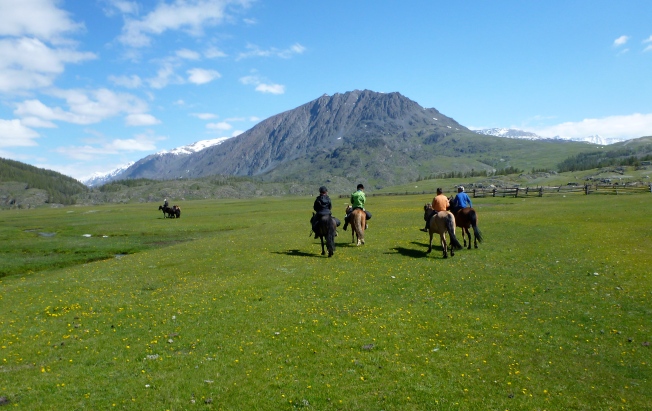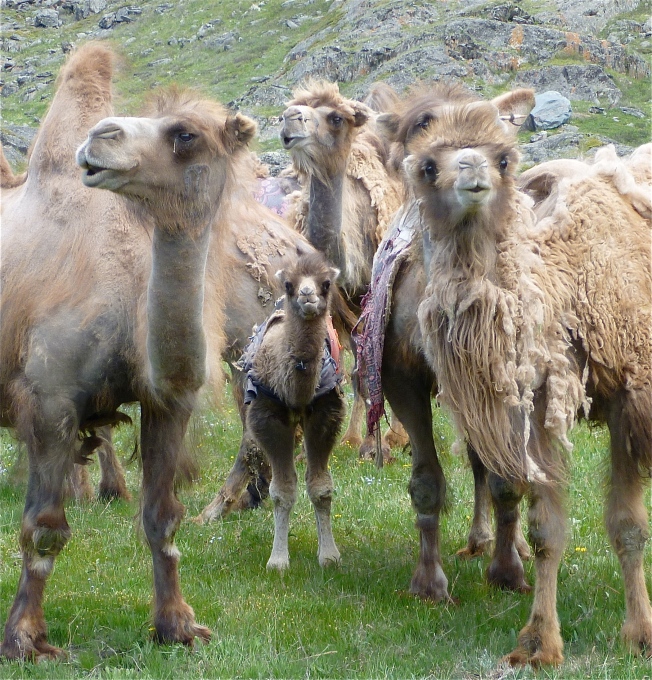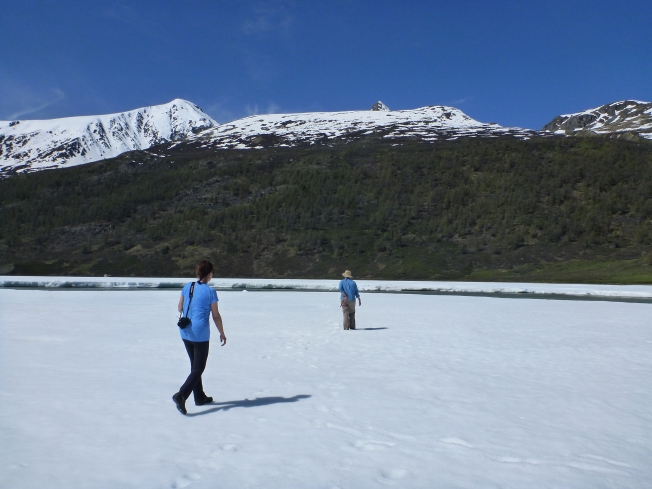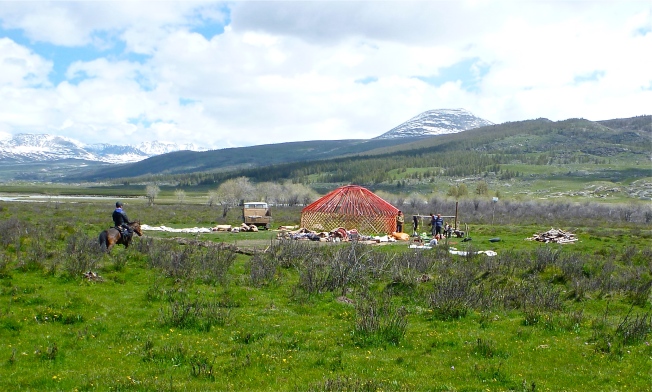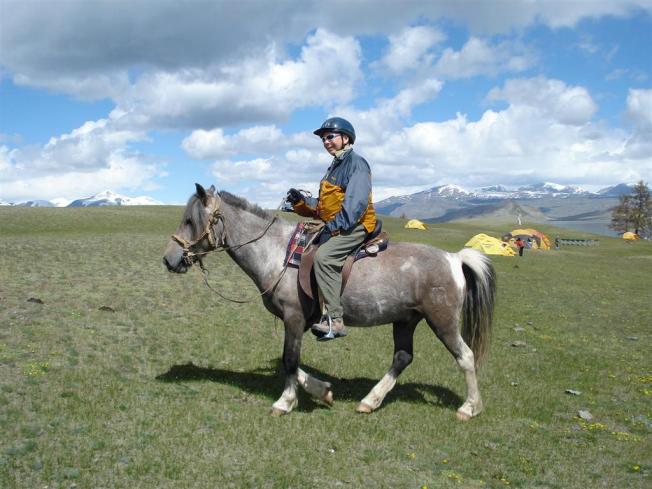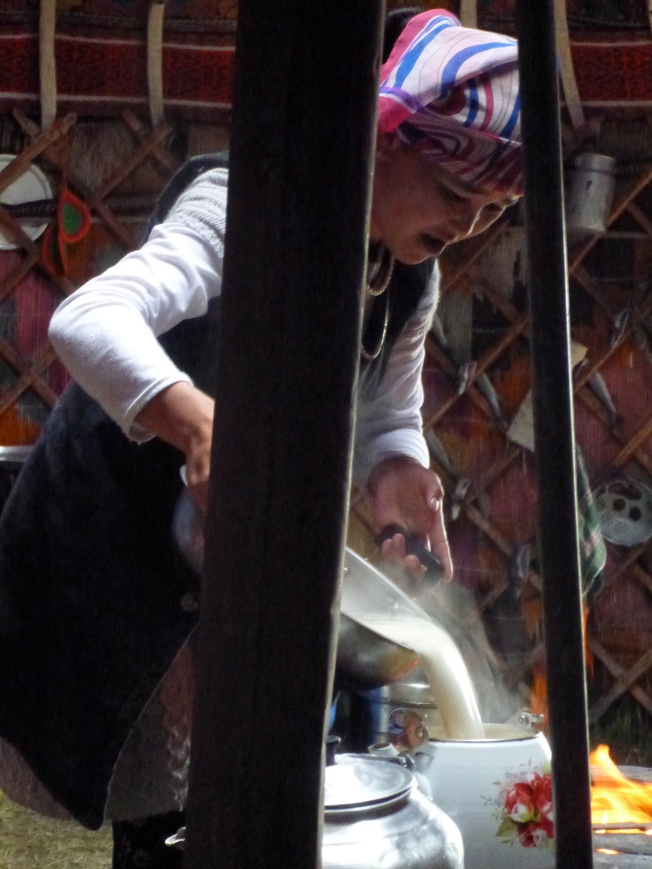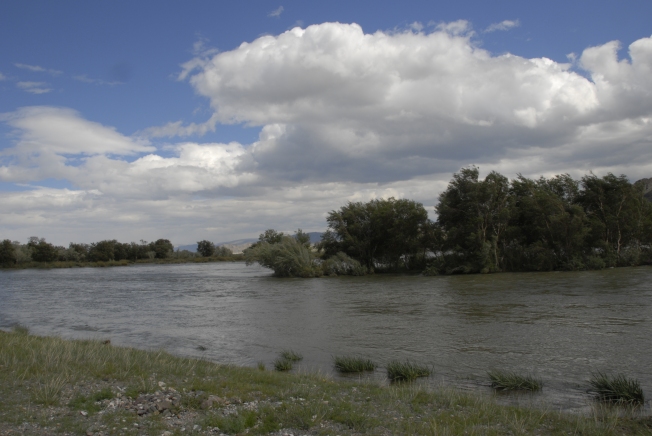CAMP THREE – CHEBAN HILL: June 15
Some places have magic; Cheban Hill transports me centuries back in time. From a high ridge I look out on a valley where life has carried on virtually unchanged for hundreds of years. Widely spaced gers, gleaming white in the late afternoon sun, testify to human inhabitants. Beside the winding stream directly below, a small band of mares and foals grazes peacefully, gradually infiltrated by a large herd of sheep and goats. The horses barely notice. Whatever motivates the herd keeps it moving through the horses to a bend in the stream, where some individuals pause to drink. Then the mobile carpet of wool and cashmere trends back through the horses and heads across the valley.
Farther away, in all directions I can see other herds, all following some inscrutable directive to flow this way and that. A lone rider canters the length of the valley, followed by a dog. Shadows lengthen on the larches that spill down the hillside across from me. The water in the stream reflects the deepening blue of the sky.
Our camels glow in the warm light.
The breeze stiffens, blows colder. It’s time to return to my tent in one of my favourite campsites on earth.
EN ROUTE TO CAMP FOUR: June 16
Breeze trots ahead eagerly. He knows camp is near and he has worked hard today. I give him his head even though I don’t want to canter.
This morning we descended from our hilltop onto a beautiful green plain strewn with yellow draba and tiny potentilla.
After crossing a river we begin a rocky climb to a high valley. Nothing seems to daunt our sturdy little horses – not rock stairs, precipitous descents or sheer drop-offs from narrow paths. They may pick their way carefully where the going is difficult, but then they trot briskly to catch up.
We lunch by a group of camels, among which are a few babies. Like all babies, these are cute. Like all camels, they will soon lose their charm. My opinion of camels undoubtedly stems from a ride I took two years ago when I spent three excruciating hours straddling the spine of a very thin beast. But as I watch this bunch stupidly chewing their cuds and staring blankly at us, I find little to love.
The rocky hills have brought us to a river and willow flats. Two years ago the willows had leafed out and my sleepy Pun’kin was determined to get into the thick of them to scratch her belly. This year the branches are bare and stiff, and while Breeze shows no inclination to stray from the narrow path, I find it difficult to keep my feet from being knocked from the stirrups. As we near camp the terrain eases into grassy hills.
Despite the difficulty of the trip, we have enjoyed the matchless beauty of snow-capped mountains, ice on the river and most especially the carpets of wildflowers: whole meadows covered in blue forget-me-nots, others in yellow draba or potentilla. Patches of bracted lousewort, white poppies and lavender. Flowers I do not recognize.
CAMP FOUR – YAK MILK VALLEY: June 16, 17
ROADBLOCK!
We camp by the icy river, below a waterfall in a narrow part of the valley. I have less trouble setting up my tent now, but still have not learned all its secrets.
In this small area the camels keep us close company.
It’s a beautiful afternoon, and we are soon lured onto the snow (just make sure you’re on land, not over water).
Normally we would spend a rest day here, but Eddie is worried about the high pass we have to cross. Once before he found snow there, and a long path had to be dug for the camels. These desert beasts are great in sand and they cross rivers without difficulty, but they don’t handle snow well, especially when heavily laden. All the gear they were carrying had to be unloaded and ferried by crew and trekkers, while the camels were led across unburdened to be reloaded on the other side. All of this had taken many hours. In order to avoid reaching the next camp after dark, Eddie plans to move us today to just below the pass. But first he sends Dosjan and Karbai out at 0600 to check conditions. By breakfast time they have radioed back that the snow is so deep and low that access to the pass is completely blocked. Not only will we have our rest day – we will not be able to complete our route to Tavn Bogd base camp. The only way out from Yak Milk Valley is to retrace our steps and return to Khotan Nur.
If you’re not prepared to be flexible, stay out of Mongolia!







